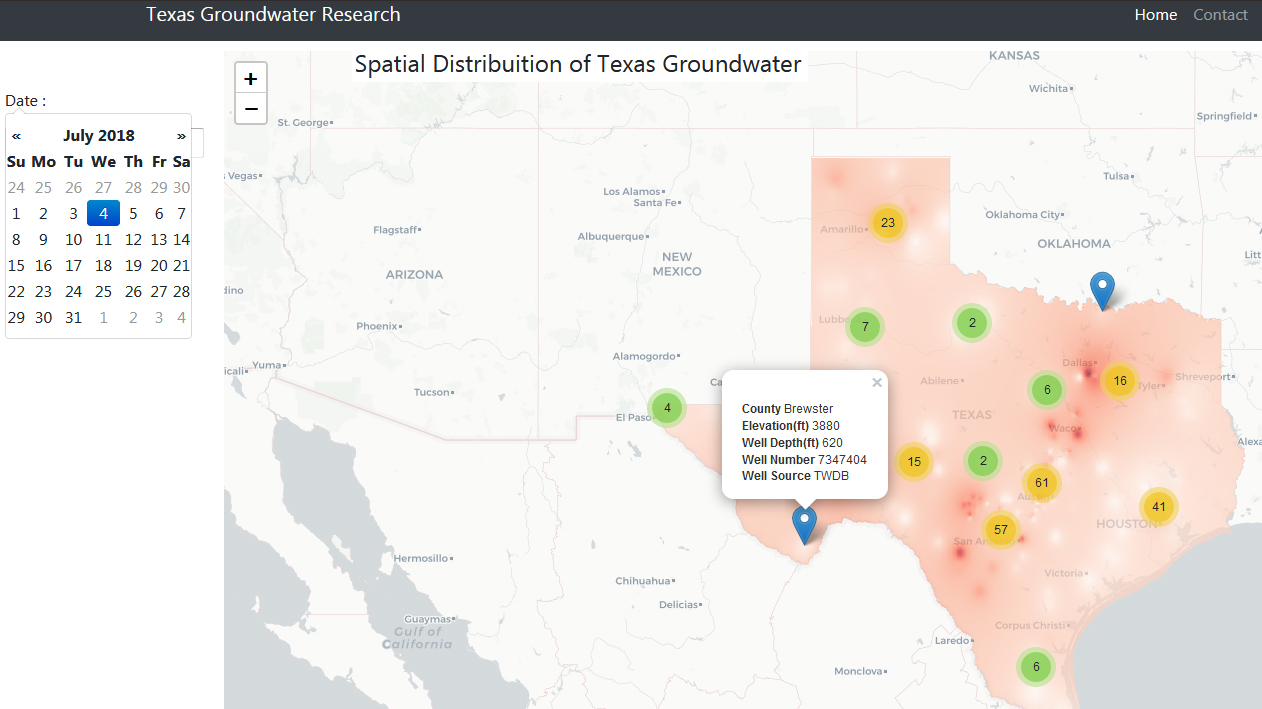August 20, 2018 – Groundwater is an important source for drinking, industry, and irrigated agriculture with the latter being the largest consumer of groundwater resources in Texas. In semi-arid and drought-prone areas, groundwater becomes a primary source to fulfill water demands. Advancements in technology that create the ability to visualize and analyze data have given us an important resource for discovery and insight into potential solutions to address this issue. With this information, groundwater levels can be predicted and monitored to determine substantial changes and its effects.
Researchers in the Cooperative Agricultural Research Center at Prairie View A&M University aimed to provide an analytics tool to identify groundwater and associated climatic variables such as temperature and precipitation from historical to near real-time scale. To build this interactive web-based resource, researchers used data from daily meteorological and groundwater data from the National Oceanic and Atmospheric Administration (NOAA) and the Texas Water Development Board (TWDB), respectively. Visual models of the analysis will be produced for users to access from their mobile devices and other portable computer hardware.
Farmers, ranchers, water resources managers and other stakeholders will be able to use the tool in their decision-making processes to monitor groundwater level and its associated climatic variables in near real-time and aid in the overall decision-making process. The implications for this study will help Texans confront potential wildfires, decimating crops, and forcing the sale of cattle herds.
*The student researcher featured in this article is Abayomi Adekanmbi, a computer science graduate student. For more information about this work, visit our Cooperative Agricultural Research Center online or contact Principal Investigators, Ram Ray, Ph.D., Eric Risch, Ph.D. and Ali Fares, Ph.D.
This work was supported by the USDA National Institute of Food and Agriculture Evans-Allen 1890 Research Formula Program project under Section 1445.

Ram Ray, Ph.D.
Research Scientist
raray@pvamu.edu
(936) 261-5094

